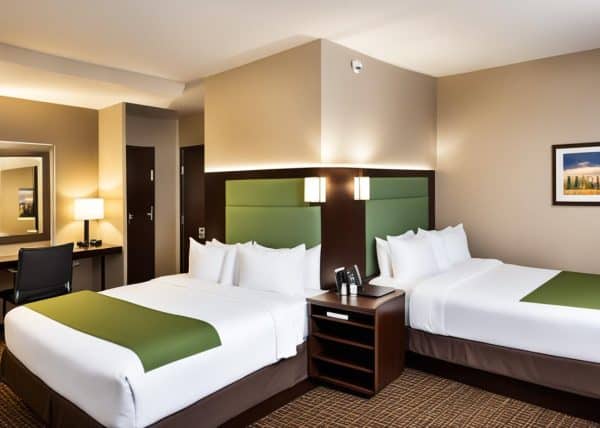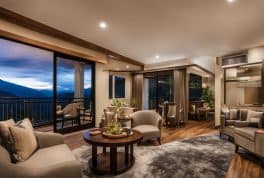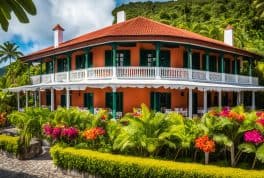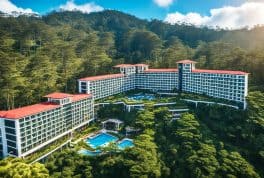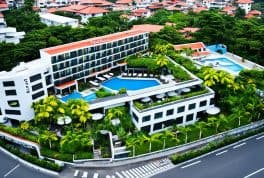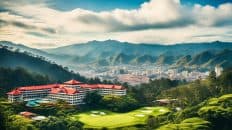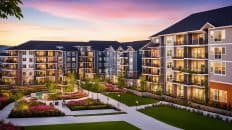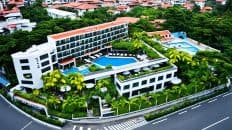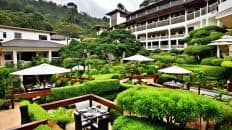Baguio City
Baguio, the "Summer Capital of the Philippines," nestled in the Cordillera Mountains, is celebrated for its cool climate and scenic beauty. Known for lush pine forests, vibrant cultural festivals, and fresh strawberries, this city offers a refreshing blend of natural charm and rich heritage. Baguio's warm hospitality and diverse culinary delights make it a captivating destination for relaxation and exploration.
Guides and Tours
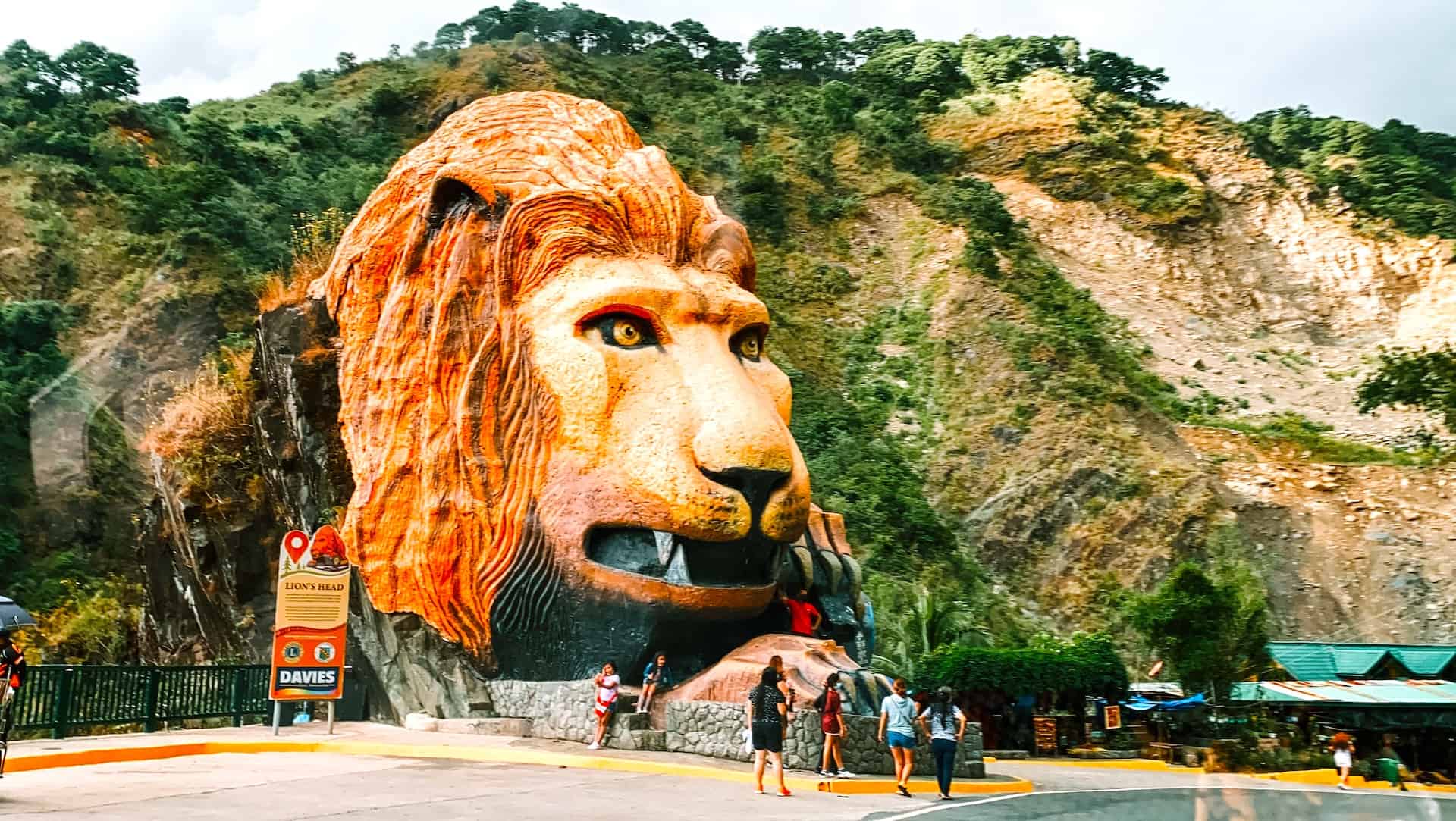
Top 10 Things to See in Baguio
Baguio City, known for its cool climate and rich cultural heritage, offers a variety of attractions that cater to different interests. Here are the top 10 things to see in Baguio:
- Burnham Park: The heart of the city, Burnham Park is perfect for leisure activities like boating, biking, and picnics. The park is a beautiful blend of nature and recreation, offering a serene environment in the middle of the urban landscape.
- Mines View Park: Famous for its panoramic views of the Cordillera mountains and the mining town of Itogon, this spot is ideal for those who love scenic landscapes. The viewing deck here provides a breathtaking perspective of Baguio’s natural beauty.
- Camp John Hay: Once a rest and recreation facility for U.S. soldiers, it now serves as a resort with a hotel, golf course, and various dining and shopping options, all surrounded by picturesque pine trees.
- Session Road: The main thoroughfare of the city, known for its vibrant atmosphere. Lined with cafes, bakeries, restaurants, and shops, it’s a great place to experience the local urban vibe of Baguio.
- The Mansion: The official summer residence of the Philippine President, The Mansion is an impressive structure with well-maintained gardens. It's an iconic symbol of Baguio and a testament to its historical significance.
- Baguio Cathedral: Officially known as Our Lady of Atonement Cathedral, this majestic church sits atop Mount Mary Hill. The cathedral is not only a place of worship but also offers a panoramic view of the city.
- Philippine Military Academy: Known for its picturesque grounds and as a training school for future officers of the Armed Forces of the Philippines, it’s a place of discipline, history, and architectural beauty.
- Tam-Awan Village: This artist village showcases the heritage and art of the Cordillera region. Here, visitors can see traditional Ifugao houses and participate in cultural activities and workshops.
- BenCab Museum: Named after the national artist Benedicto Cabrera, this museum houses a collection of contemporary and Cordilleran art. It’s a fusion of art, culture, and nature, offering a unique cultural experience.
- Strawberry Farm in La Trinidad: Just outside Baguio, the strawberry farm in La Trinidad allows visitors to experience strawberry picking. It’s a delightful activity, especially during the strawberry season, and offers a glimpse into the agricultural side of the region.
These attractions encapsulate the essence of Baguio, from its natural beauty and cultural richness to its historical significance and vibrant city life.
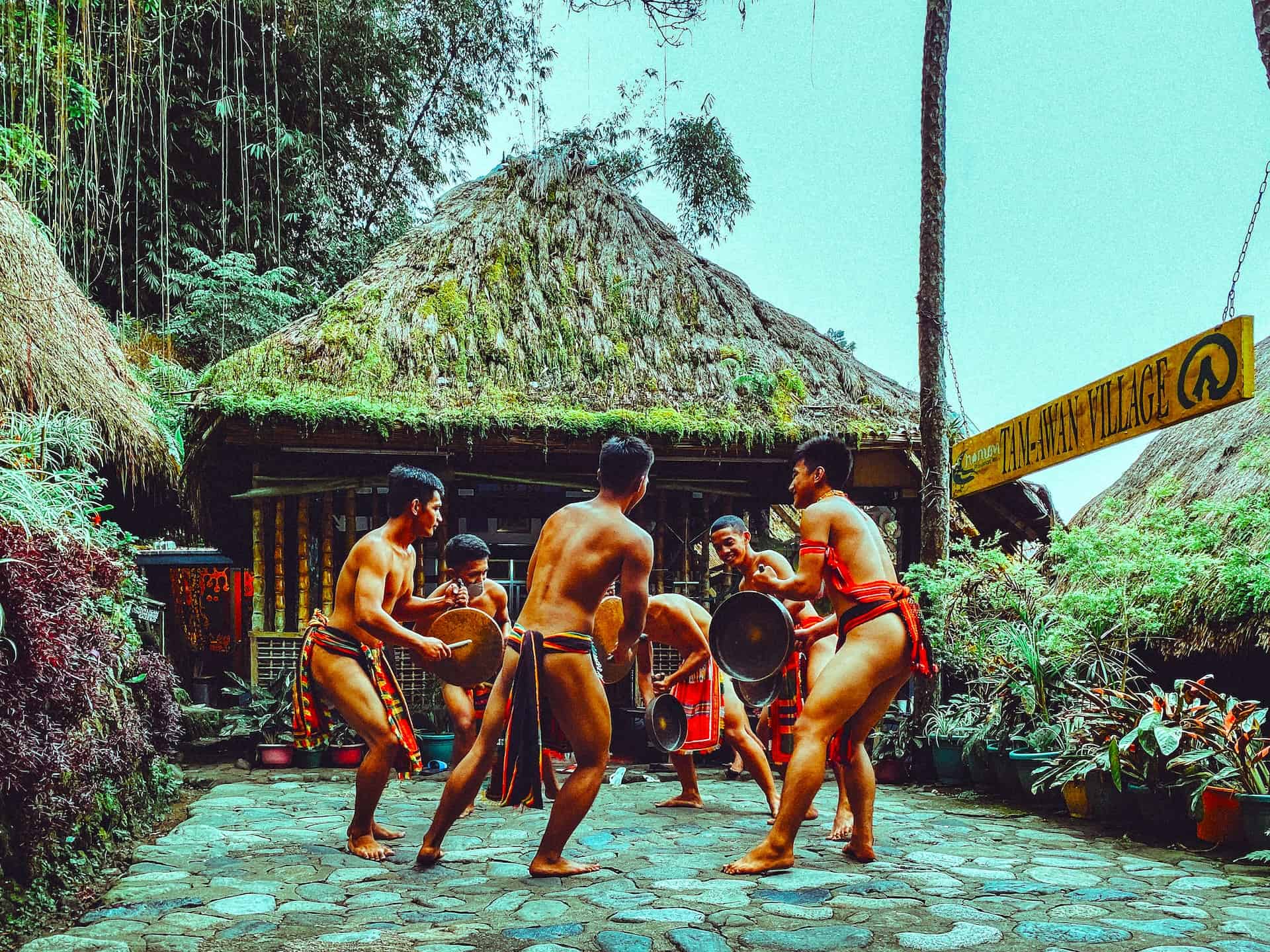
Top 10 Questions and Answers about Baguio
- What is Baguio City known for?
- Baguio City is known as the "Summer Capital of the Philippines" due to its cool climate. It's famous for its beautiful parks, scenic views, rich cultural heritage, and vibrant festivals like the Panagbenga Flower Festival.
- What is the best time to visit Baguio?
- The best time to visit Baguio is during the dry season from November to May. The coolest months are from December to February, while the Panagbenga Festival, usually held in February, is a particularly vibrant time to visit.
- How do you get to Baguio City?
- Baguio City can be reached by bus or car from Manila. The journey takes about 4-6 hours. Major bus companies offer regular trips to Baguio from various terminals in Metro Manila.
- What are the must-try foods in Baguio?
- Must-try foods include strawberry taho, Baguio longganisa, pinikpikan (a traditional chicken dish), fresh fruits and vegetables from the local market, and various pastries and bread from local bakeries.
- Are there traditional crafts to buy in Baguio?
- Yes, Baguio is famous for its handwoven fabrics, woodcarvings, silver crafts, and knitted products. The Baguio Public Market and various shops around Mines View Park are great places to buy these crafts.
- What are the popular tourist spots in Baguio?
- Popular spots include Burnham Park, Mines View Park, Session Road, The Mansion, Camp John Hay, Wright Park, the Botanical Garden, and the BenCab Museum.
- Is Baguio City safe for tourists?
- Baguio City is generally safe for tourists. As with any travel destination, it's advisable to take regular safety precautions, especially in crowded areas and during night-time.
- What is the climate like in Baguio City?
- Baguio City enjoys a subtropical highland climate. It is cooler than most Philippine cities, with temperatures that can drop to as low as 8°C in the coldest months and rarely go above 26°C even in the warmest months.
- Can you experience local traditions in Baguio?
- Yes, visitors can experience local traditions, especially during festivals and cultural events. The indigenous culture is celebrated through art exhibits, performances, and museums like Tam-Awan Village.
- What activities can you do in Baguio?
- Activities include sightseeing, hiking, visiting art galleries, strawberry picking at nearby farms, attending cultural events, shopping for local crafts, and enjoying the local food scene.
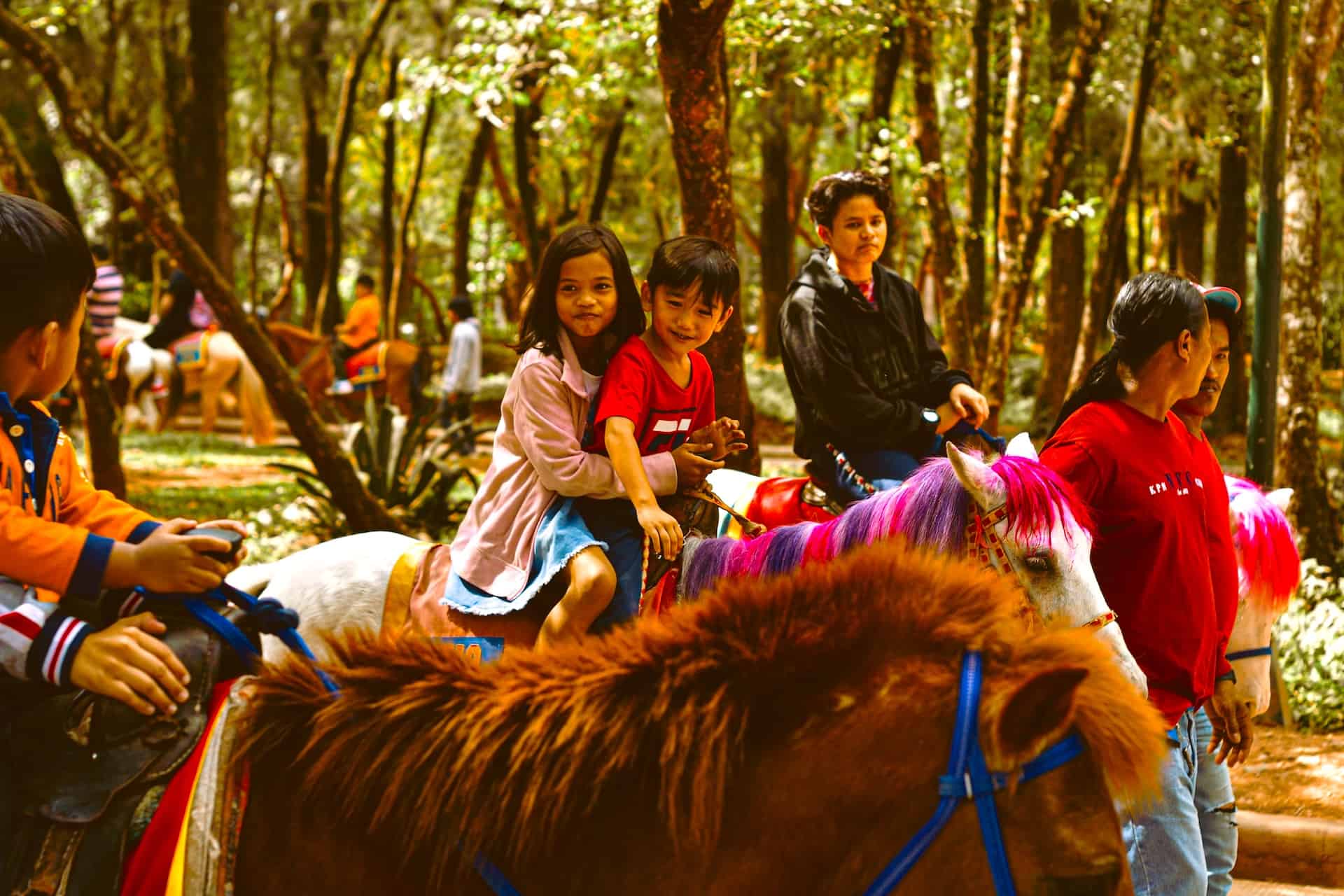
Getting to Baguio
Getting to Baguio City, located in the northern part of Luzon in the Philippines, can be an adventure in itself, offering scenic views and a glimpse into the country's diverse landscapes. Here's how you can get to Baguio:
By Land
1. Bus Travel:
- From Manila: The most common and economical way to get to Baguio is by bus. Several bus companies operate regular services from Manila to Baguio. The trip typically takes about 4-6 hours, depending on traffic conditions. Major bus lines include Victory Liner, Genesis Transport, and Joy Bus, among others. These companies offer various services, ranging from regular air-conditioned buses to deluxe services with more amenities.
- Bus Terminals: Buses to Baguio usually depart from terminals in Pasay, Cubao, and Caloocan. Some bus companies also offer online booking options.
- Travel Tips: Overnight trips are popular as they help travelers avoid daytime traffic and save on one night's accommodation.
2. Private Vehicle:
- Traveling to Baguio by private vehicle is a great option for those who prefer a more leisurely trip or are traveling in groups. The journey takes about 4-6 hours via the North Luzon Expressway (NLEX) and Tarlac-Pangasinan-La Union Expressway (TPLEX).
- Scenic Routes: The drive up to Baguio offers picturesque views, especially as you ascend the mountain roads. Key routes include Kennon Road, Marcos Highway, and Asin-Nangalisan-San Pascual Road. Kennon Road, however, is often closed during rainy seasons due to landslides, so it's best to check road conditions before your trip.
By Air
- While Baguio City does not have its own commercial airport, the nearest airport is the Loakan Airport. However, it primarily serves private planes and charter flights. For commercial flights, the nearest major airports are Clark International Airport in Pampanga and Ninoy Aquino International Airport (NAIA) in Manila. From these airports, you can take a bus or a private vehicle to Baguio.
Travel Tips
- Weather Considerations: The best time to travel to Baguio is during the dry months from November to May. Baguio is known for its unpredictable weather, so it's advisable to bring appropriate clothing.
- Planning Ahead: During peak seasons, such as the Panagbenga Festival or holidays, it’s wise to book your bus tickets and accommodations well in advance due to the influx of tourists.
- Road Conditions: If traveling by road, always check the latest traffic and road condition updates, especially for routes like Kennon Road, which can be prone to closures.
Traveling to Baguio, regardless of the mode of transportation, is part of the experience of visiting this unique city in the Philippines. The journey, whether by night bus or through the winding mountain roads, sets the stage for the cool, refreshing atmosphere that Baguio is known for.
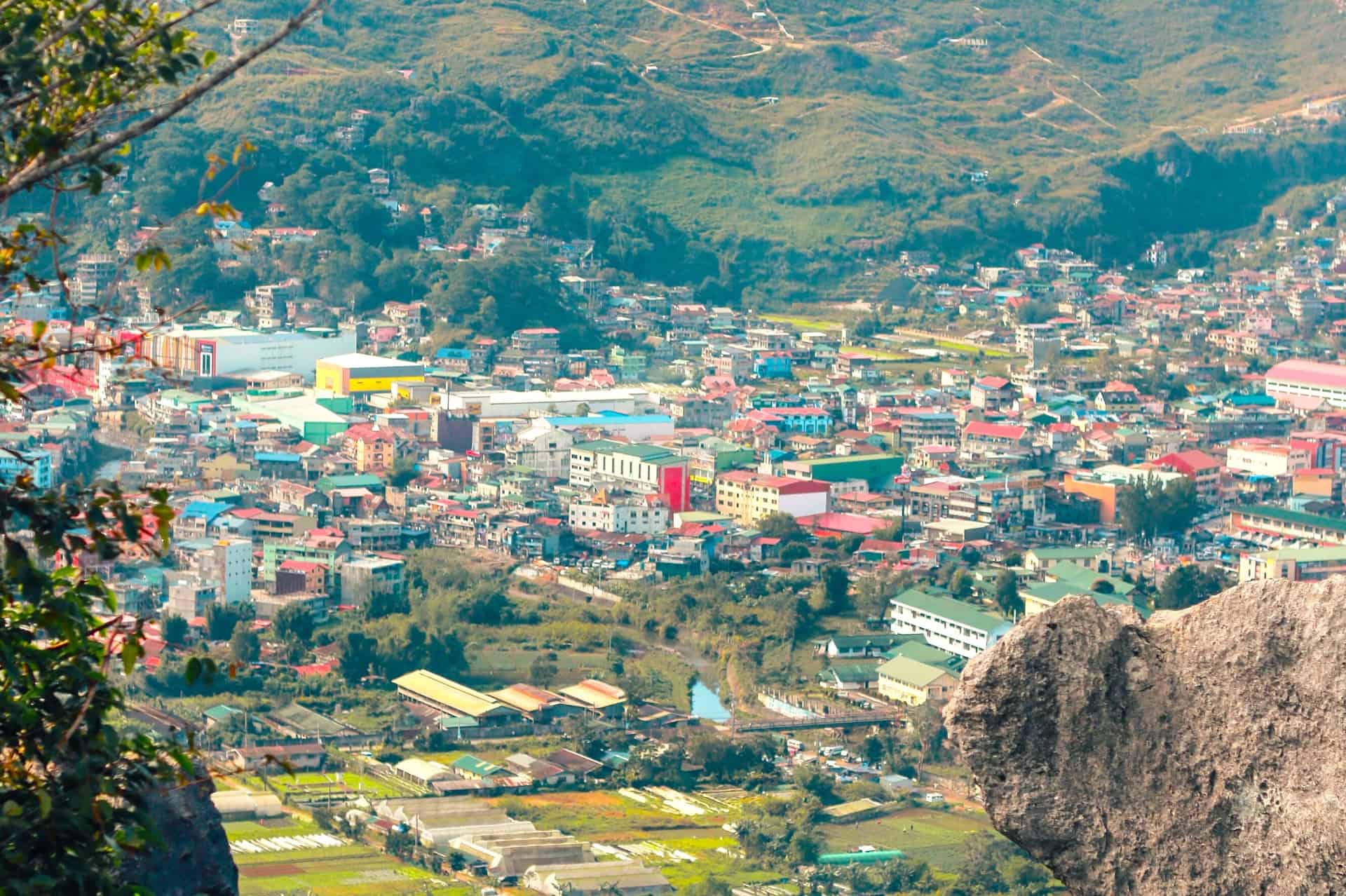
Why you should visit Baguio
Discovering the Charm of Baguio: A Traveler's Haven
Baguio, fondly known as the "Summer Capital of the Philippines," is a city that beckons travelers with its unique blend of natural beauty, rich culture, and a refreshingly cool climate. Nestled in the Cordillera Mountains, Baguio offers a serene escape from the hustle and bustle of urban life, making it an ideal destination for both relaxation and adventure. This article explores why Baguio should be on every traveler's list, unveiling the city's many charms through various lenses.
The Enchanting Climate of Baguio
A Refreshing Escape: One of the most compelling reasons to visit Baguio is its climate. Unlike the tropical heat prevalent in most parts of the Philippines, Baguio enjoys a cool and temperate climate year-round. This refreshing weather is not only a pleasant respite but also enhances the overall travel experience, making outdoor activities and sightseeing more enjoyable.
A Haven for Nature Lovers: The cool climate of Baguio plays a significant role in nurturing its lush landscapes and vibrant flora. The city's parks and gardens are a testament to its natural beauty, offering a visual feast of colorful flowers and verdant greenery. These spaces provide a tranquil environment for nature walks, picnics, and leisurely strolls.
Cultural Richness and Heritage
A Melting Pot of Cultures: Baguio is a melting pot of various cultures, reflected in its festivals, cuisine, and local crafts. The city's rich heritage is a blend of indigenous traditions and modern influences, creating a unique cultural tapestry that is both intriguing and inviting.
Arts and Crafts Galore: The city is also known for its vibrant arts scene, with numerous galleries and workshops showcasing the work of local artists and artisans. From traditional weaving to contemporary art, Baguio's creative landscape is a delight for art enthusiasts and collectors alike.
Gastronomic Delights
Local Cuisine and Culinary Adventures: Food is an integral part of the Baguio experience. The city's cool climate contributes to the freshness and quality of its produce, which in turn influences its culinary offerings. From cozy cafes serving local coffee to restaurants offering Cordilleran delicacies, Baguio's food scene is as diverse as it is delicious.
Strawberry Fields Forever: A visit to Baguio is incomplete without sampling its famous strawberries. The nearby La Trinidad Strawberry Farms offer a delightful experience where visitors can pick fresh strawberries and savor homemade strawberry treats, a unique and tasty adventure for all ages.
The Urban Charm of Baguio
A City of Surprises: Baguio perfectly balances urban conveniences with its natural and cultural assets. The city's downtown area is a bustling hub of activity, with markets, malls, and entertainment venues providing a variety of experiences for visitors.
Shopping and Entertainment: From the famous Baguio City Market, known for its handicrafts and souvenirs, to modern shopping centers, Baguio caters to all shopping preferences. The city's nightlife and entertainment options also add to its urban appeal, offering a different way to experience its vibrant culture.
Adventure and Recreation
Outdoor Activities Galore: For the more adventurous, Baguio's surrounding landscapes provide a playground for a range of outdoor activities. Hiking, biking, and horseback riding are popular ways to explore the city's natural surroundings, offering breathtaking views and exhilarating experiences.
Golfing in the Clouds: Golf enthusiasts will find Baguio's courses a unique experience. Playing amidst the cool mountain air and scenic vistas is not just a challenge but also a pleasure, making it a favorite among golfers of all skill levels.
The Warmth of Baguio's People
Hospitality at Its Best: Beyond its scenic landscapes and cultural landmarks, the true essence of Baguio lies in its people. Known for their warmth and hospitality, the locals make every visit to Baguio more memorable. Their friendliness and willingness to share their culture add a personal touch to the travel experience.
Festivals and Celebrations: Participating in local festivals and celebrations is a great way to immerse oneself in the culture of Baguio. These events, marked by dance, music, and colorful costumes, showcase the city's communal spirit and joyous nature.
Conclusion: Baguio - A City That Captivates
Baguio is more than just a destination; it's an experience that captivates the heart and soul. Its unique combination of cool weather, rich cultural heritage, natural beauty, and urban vibrancy creates a travel experience that is both diverse and enriching. Whether seeking a quiet retreat in nature, a cultural journey, culinary adventures, or just a pleasant change of scenery, Baguio offers something for every traveler. It's a city where each visit uncovers new delights, making every return trip as exciting as the first. For those yearning for an escape that combines the tranquility of the mountains with the charm of city life, Baguio is the perfect destination.
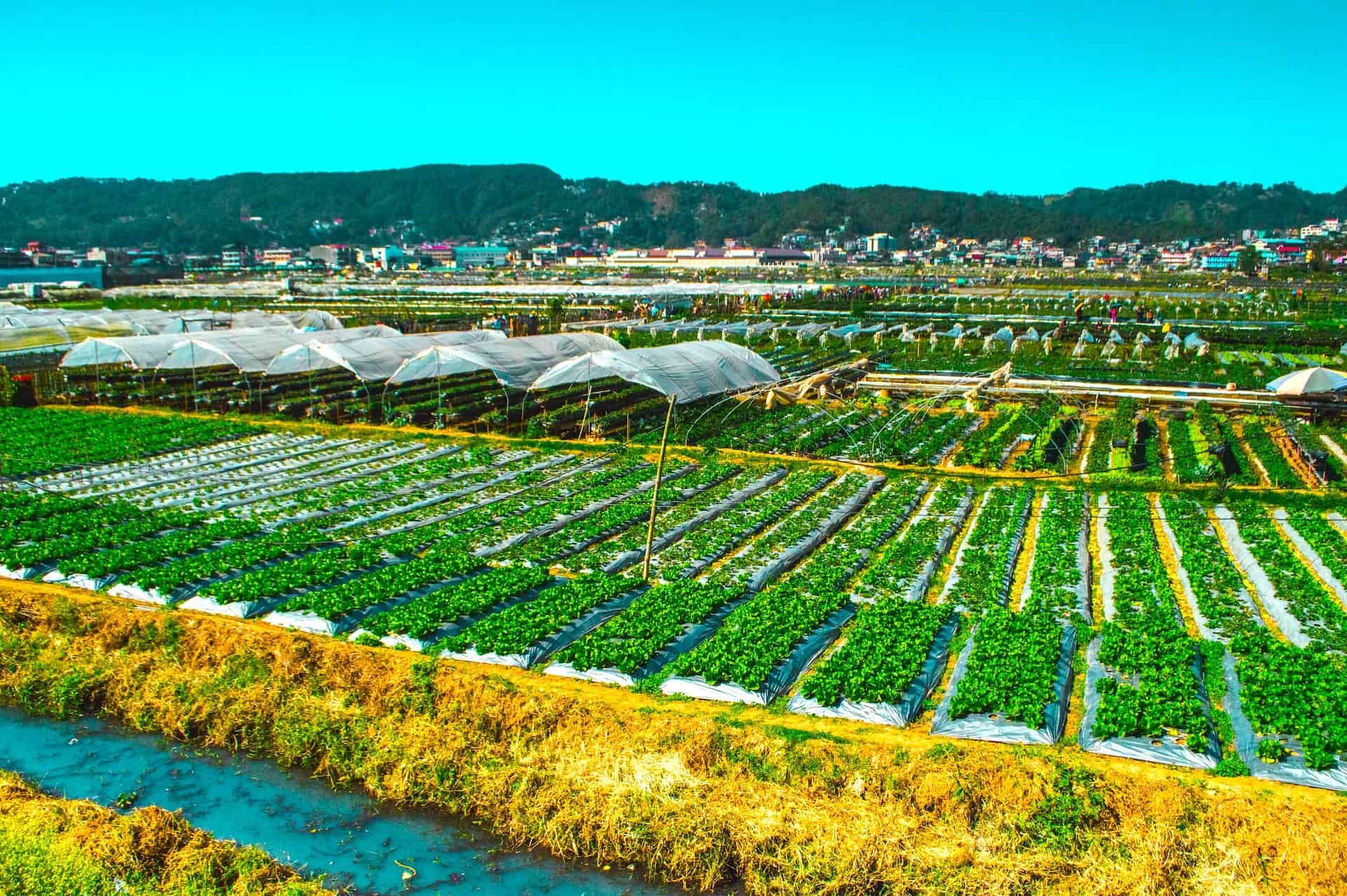
Baguio Facts
1: The Enchanting City of Pines – An Introduction to Baguio
Nestled in the heart of the Cordillera Central mountains in Northern Luzon, Philippines, lies a city unlike any other in the country. Baguio, known as the Summer Capital of the Philippines, boasts a unique blend of natural beauty, rich history, and vibrant culture. With its cool climate, scenic landscapes, and a charm that has endured through the ages, Baguio continues to captivate the hearts of tourists and residents alike.
The city’s origin dates back to the early 20th century, a time marked by significant changes in the Philippines under American colonial rule. Baguio was designed as a hill station and a respite from the tropical heat of the lowlands, particularly for American soldiers and administrators. The city's layout, including its parks and main thoroughfares, was the brainchild of American architect and urban planner Daniel Burnham. Today, Burnham Park remains a central feature of Baguio, a testament to the city’s origins and a favorite recreational spot for locals and visitors.
As the city evolved, so did its local government. The Baguio City Hall, a historic building that has withstood the test of time, serves as the heart of the city’s administrative functions. It embodies the resilience and growth of the local government unit (LGU), which has been instrumental in managing Baguio's transformation from a quaint mountain town into a bustling urban center. The local government, under the leadership of figures like Mayor Benjamin Magalong, has played a pivotal role in balancing development with the preservation of Baguio’s cultural and environmental heritage.
Baguio’s geography is as fascinating as its history. Located over 1,500 meters above sea level, the city is enveloped by lush pine forests, earning it the moniker "City of Pines." This elevation contributes to its cool climate, a characteristic that sets Baguio apart from other Philippine cities. The average temperature in Baguio ranges from 15 to 23 degrees Celsius, a pleasant departure from the tropical heat. This cool climate has been a major draw for tourists, especially during the summer months and the holiday season, when the city offers a refreshing escape.
Baguio's appeal extends beyond its climate. The city is a melting pot of cultures, reflected in its diverse communities and rich traditions. From the annual Panagbenga Festival, a month-long celebration of flowers, to the vibrant art scene, Baguio is a cultural powerhouse. The city’s artistic flair is visible in its public spaces, galleries, and even in the vibrant street art that adorns its walls.
One cannot discuss Baguio without mentioning its iconic landmarks. Camp John Hay, once a rest and recreation facility for U.S. military personnel, now serves as a major tourist destination, with its golf course, hotels, and pine tree-lined roads. The Baguio Botanical Garden is another gem, offering a serene environment and a glimpse into the region's flora. Mines View Park, Wright Park, and the Baguio Cathedral are other notable attractions that add to the city's allure. Each site not only offers scenic views but also tells a story of Baguio's past and present.
The city’s boundaries stretch into neighboring towns like La Trinidad, known for its strawberry farms. These neighboring towns, sharing in the cool climate and natural beauty, have become part of the larger Baguio experience, offering additional attractions and experiences for visitors.
Baguio has also emerged as a hub for education and learning, with institutions like the University of Baguio attracting students from across the country. This influx of students adds to the city's dynamic atmosphere, making it a melting pot of ideas and cultural exchanges.
The local economy of Baguio is as diverse as its culture. Tourism is a major economic driver, with hotels in Baguio ranging from luxurious establishments like the Baguio Country Club to budget-friendly options and quaint Airbnb stays. The city’s hotel industry has grown significantly in recent years, catering to the increasing number of tourists seeking Baguio’s unique experience. Restaurants, cafes, and local eateries offer a culinary adventure, with dishes ranging from traditional Igorot fare to international cuisine.
In addition to tourism, the city is home to a thriving arts and crafts industry. The Baguio Public Market is a hub for locally made goods, including handwoven fabrics, wood carvings, and silvercraft. These products not only contribute to the local economy but also help preserve and promote the cultural heritage of the town and the region.
The city's location, perched high in the mountains of Northern Luzon, makes it a strategic gateway to other provinces in the region. This has led to the development of a robust transportation network, connecting Baguio to Metro Manila and other parts of Luzon. The journey from Manila to Baguio, once a tedious trek, is now a convenient bus ride, thanks to companies like Victory Liner. The city's roads, bustling with activity, are lined with taxis, jeepneys, and buses, facilitating movement within and beyond the city limits.
Despite its growth and development, Baguio has managed to retain its charm and allure. The city's commitment to preserving its natural environment, cultural heritage, and unique character is evident in its careful urban planning and community-driven initiatives. Local events like the Night Market in Baguio and the annual Christmas Village are not just tourist attractions but also celebrations of the city's community spirit and creativity.
As Baguio continues to evolve, it faces its share of challenges. The increasing population and growing tourism industry have put pressure on the city's resources and infrastructure. Issues like traffic congestion and environmental sustainability are at the forefront of local concerns. However, the city's government, businesses, and communities are actively working together to address these challenges and ensure that Baguio remains a vibrant, welcoming, and sustainable city for generations to come.
In conclusion, Baguio is more than just a travel destination; it is a living, breathing city with a soul. It's a place where history, culture, and nature converge, creating an experience that is uniquely Baguian. Whether it's the cool breeze whispering through the pine trees, the warmth of the locals, or the vibrant hues of its festivals, Baguio leaves an indelible mark on all who visit. As the city continues to grow and adapt, it remains rooted in its rich heritage, proudly standing as a testament to the beauty and resilience of the Philippine highlands.
2: Baguio's Tapestry of Time – Historical Context
Nestled in the heart of the Cordillera Central range in the Philippines, Baguio City stands as a testament to a rich and multifaceted history. This second section delves into the historical tapestry that has shaped Baguio into the city it is today. From its early days to its current status as the Summer Capital, Baguio's journey is a narrative of transformation, resilience, and enduring charm.
2.1 The Foundations of Baguio City
The story of Baguio begins in the early 1900s when the Philippines was under American colonial rule. Recognizing the potential of its cool climate and scenic highland location, the Americans established Baguio as a hill station. The city was envisioned as a retreat from the heat of the lowlands, a place where colonial administrators and soldiers could rejuvenate. This period marked the beginning of significant urban development, including the construction of Camp John Hay, a rest and recreation facility for the U.S. military. John Hay, an American military base named after a U.S. Secretary of State, became synonymous with Baguio's early development.
The urban planning of Baguio was largely influenced by the American architect and urban planner, Daniel Burnham. He laid out the city's streets and parks, leaving a legacy that still defines Baguio's cityscape. The central feature of his design, Burnham Park, remains a beloved green space, hosting a lake, gardens, and numerous recreational facilities.
2.2 The Growth of Local Governance
As Baguio grew, so did its governance structures. The establishment of the Baguio City Hall marked a significant milestone in the city's administrative evolution. Serving as the center of local governance, the first City Hall witnessed the transition of power from American to Filipino hands. Over the years, the local government unit (LGU) of Baguio has played a crucial role in the city's development, managing its transformation while preserving its unique heritage.
The role of the local government in Baguio's history cannot be understated. It has navigated the city through various challenges, from the reconstruction efforts after the devastating 1990 earthquake to the more recent developments in urban management. Leaders like Mayor Benjamin Magalong have been instrumental in these efforts, guiding Baguio towards sustainable and inclusive growth.
2.3 The Cultural Evolution of Baguio
Baguio's cultural landscape has evolved significantly over the years. The city has become a melting pot of indigenous and foreign influences, creating a rich tapestry of traditions and practices. The indigenous communities of the Cordilleras, particularly the Igorot people, have been integral to Baguio's cultural identity. Their practices, art, and traditions continue to be a vital part of the city's heritage.
The American colonial period introduced new cultural dimensions to Baguio. This influence is evident in the city's architecture, with structures like the Baguio Cathedral and the Mansion House (the official summer residence of the Philippine President) showcasing American colonial designs.
2.4 Post-Colonial Developments and Challenges
Post-colonial Baguio faced numerous challenges, including managing urban growth and preserving its natural environment. The city's expansion beyond its original city limits led to increased urbanization, bringing both opportunities and challenges. The local government has had to balance development with environmental conservation, a task that has become increasingly complex with Baguio's growing popularity as a tourist destination.
The late 20th century also saw Baguio emerging as an educational hub. The establishment of universities and colleges, such as the University of Baguio, attracted students from across the region, adding to the city's cultural diversity.
2.5 Baguio in Recent Times
In recent years, Baguio has continued to evolve. The city has seen significant infrastructural developments, including improvements in transportation and public facilities. Tourism has flourished, with new hotels, restaurants, and attractions enriching the city's offerings. However, this growth has also brought challenges, particularly in terms of managing tourist influx and urban density.
Despite these challenges, Baguio has managed to retain its charm. The local government's commitment to sustainable development, community engagement, and preservation of cultural heritage has been pivotal in this regard. The LGU's efforts in promoting eco-friendly initiatives and preserving green spaces have helped maintain Baguio's reputation as a haven amidst the bustle of modern life.
2.6 The Resilience of Baguio
The resilience of Baguio is perhaps best exemplified by its recovery from the 1990 Luzon earthquake. The disaster caused widespread destruction, but the city's response was swift and effective. Rebuilding efforts were undertaken with a focus on resilience and sustainability. This period also saw a renewed emphasis on preserving Baguio's cultural heritage and natural environment.
2.7 Conclusion
Baguio's history is a narrative of growth, resilience, and cultural synthesis. From its foundations as an American hill station to its status as a thriving urban center, the city has navigated the tides of change while maintaining its unique identity. The local government, cultural diversity, and community spirit have been central to this journey. As Baguio continues to evolve, it holds onto its past, cherishing its heritage while embracing the future with open arms.
In summary, the historical context of Baguio provides insight into the city's unique character. It is a place shaped by various influences – geographical, cultural, and political. Baguio stands not just as a city but as a symbol of the Philippines' rich and diverse history, a beacon of progress and cultural richness in the heart of Northern Luzon.
3: The Governing Heart of Baguio - Local Administration and Civic Life
As we delve deeper into the essence of Baguio, it's imperative to understand the role of its local government, a driving force behind the city’s growth and development. This third section explores how the Baguio City Hall and its administrative framework have shaped the city's present and future, touching upon the roles of various local government units (LGUs), their impact on the community, and the vision guiding Baguio's leaders.
3.1 The Role of Baguio City Hall in Local Governance
At the core of Baguio's administrative structure is the Baguio City Hall. More than just a building, it symbolizes the city's governance and resilience. Throughout the years, it has been the epicenter of decision-making, a place where policies are crafted, and the city's future is mapped out. The City Hall, with its unique architecture and historical significance, stands as a testament to Baguio's journey from a quaint hill station to a bustling urban center.
The local government of Baguio, operating from the City Hall, plays a multifaceted role. It oversees urban planning, ensuring that development aligns with the city’s vision. The LGU is also the department responsible for managing essential services, including public safety, health, education, and sanitation. In recent years, the focus has expanded to include sustainable urban development and environmental conservation, crucial for maintaining Baguio's unique ecological and cultural landscape.
3.2 Leadership and Vision: Mayor Benjamin Magalong's Contributions
In discussing Baguio's local governance, it is impossible to overlook the contributions of its leaders, particularly Mayor Benjamin Magalong. His leadership has been pivotal in steering Baguio towards modernization while preserving its heritage. Mayor Magalong's tenure has been marked by efforts to improve public services, enhance environmental sustainability, and promote transparency in the city's administration.
Under his guidance, the local government has implemented various projects to improve urban infrastructure, traffic management, and public safety. Initiatives such as the revitalization of Burnham Park and the introduction of smart city technologies reflect his vision of a progressive yet sustainable Baguio.
3.3 The Local Government Unit's Role in Community Building
The local government unit in Baguio extends beyond administration and governance; it plays a vital role in community building. Through various programs and initiatives, the LGU fosters a sense of belonging and engagement among residents. It collaborates with other local governments, communities, NGOs, and the private sector to address social issues, promote cultural activities, and support economic development.
Community events, public consultations, and participatory governance are hallmarks of Baguio's local government. These practices not only enhance civic engagement but also ensure that the voices of Baguio's diverse populace are heard and considered in decision-making processes.
3.4 Challenges and Strategies in Urban Management
As Baguio continues to grow, the local government faces the challenge of managing urbanization while preserving the city’s character. The expansion beyond city limits, increasing population, and tourist influx pose significant challenges in terms of infrastructure, environmental sustainability, and quality of life.
To address these challenges, the LGU has adopted a multi-faceted approach. This includes enforcing zoning laws to regulate urban expansion, implementing waste management programs, and promoting sustainable tourism practices. The Baguio City government actively collaborates with neighboring towns and provinces to manage regional development and environmental conservation.
3.5 Public Services and Infrastructure Development
The LGU is also responsible for providing and maintaining public services and infrastructure. This includes the management of the Baguio Water District, ensuring a reliable water supply for residents and businesses. The local government has invested in upgrading water treatment facilities and expanding the distribution network to meet the growing demand.
Transportation infrastructure is another key focus area. The LGU works to improve road networks, public transportation, and traffic management systems. Efforts to enhance pedestrian pathways and public transport options reflect the city's commitment to sustainable and accessible urban mobility.
3.6 Preserving Baguio's Cultural and Natural Heritage
One of Baguio's most significant challenges is balancing development with the preservation of its cultural and natural heritage. The local government plays a critical role in this regard. Initiatives to protect historical landmarks, conserve green spaces, and promote local arts and culture are central to Baguio's urban planning.
The LGU's efforts in preserving sites like the Baguio Botanical Garden, Mines View Park, and Wright Park are commendable. These sites not only offer recreational spaces for residents and tourists but also serve as symbols of Baguio's commitment to preserving its natural beauty.
3.7 Looking Towards the Future: Sustainable Development Goals
Looking towards the future, Baguio's local government is aligning its development plans with sustainable goals. This includes fostering economic growth that benefits all local governments and communities, promoting environmental conservation, and ensuring social inclusivity.
Initiatives like green urbanism, promotion of renewable energy, and support for local enterprises reflect this forward-thinking approach. The LGU is committed to creating a Baguio that is not only thriving and dynamic but also resilient and sustainable.
3.8 Conclusion
In conclusion, the local government unit, with the Baguio City Hall at its heart, plays a crucial role in shaping the city's present and future. Through effective governance, visionary leadership, and community engagement, the LGU has been instrumental in guiding Baguio through its challenges and opportunities.
As Baguio moves forward, the city's governance structures and leaders will continue to be pivotal in navigating the path of sustainable urban development. The efforts of the local government, in collaboration with its citizens, will ensure that Baguio remains a city that is not only vibrant and prosperous but also mindful of its rich heritage and natural environment. In this harmonious blend of progress and preservation, Baguio stands as a model for cities striving for sustainable development in the 21st century.
4: The Nature’s Haven - Baguio’s Geography and Climate
Nestled amid the towering peaks of the Cordillera Central range in Northern Luzon, Baguio City, known as the Philippines' Summer Capital, presents a remarkable blend of geographic splendor and climatic uniqueness. This section delves into the distinct topography and climate of Baguio, unraveling how these natural facets shape the city's identity, lifestyle, and allure.
4.1 Baguio’s Unique Topography
Baguio's geography is a tapestry of rolling hills, lush valleys, and dense pine forests, which define its city limits and stretch into the city proper. Located approximately 1,540 meters above sea level, Baguio offers a panoramic view of the mountains and valleys of Northern Luzon. This elevation and location is not only a source of its scenic beauty but also a contributor to its much-celebrated cool climate.
The city’s topography has played a crucial role in its development. The undulating terrain has influenced the city's urban design, resulting in winding roads, sloping streets, and unique architectural adaptations. This interaction between nature and urban development is a distinctive feature of Baguio, setting it apart from other cities in the country.
4.2 The Cool Climate of Baguio
One of the most defining characteristics of Baguio is its cool climate. The city enjoys a below average temperature that averages between 15 to 23 degrees Celsius, a stark contrast to the tropical heat experienced in most parts of the Philippines. This temperate climate is a year-round feature, making Baguio a favored destination for both local and foreign tourists seeking respite from the heat.
The cool weather of Baguio is attributed to its high altitude. The city’s elevation above sea level ensures that it remains relatively cooler than the lowland areas. This unique climate has significant implications for the city’s lifestyle, culture, and economy. It influences everything from clothing choices to agricultural practices, with crops like strawberries and Baguio beans thriving in this environment.
4.3 Baguio as a Biodiversity Hotspot
Baguio's geographic location and climate make it a biodiversity hotspot. The surrounding pine forests, a rare sight in the tropical Philippines, are home to a variety of flora and fauna. The city's commitment to preserving these natural environments has led to the establishment of protected areas such as the Baguio Botanical Garden, which showcases the region's rich plant diversity.
The Botanical Garden, along with other green spaces like Burnham Park and Mines View Park, is not only a tourist attraction but also a testament to Baguio’s dedication to environmental conservation. These spaces provide a habitat for local wildlife, serve as carbon sinks, and contribute to the city’s overall ecological balance.
4.4 Impact of Geography and Climate on Lifestyle and Culture
Baguio's geography and climate have profoundly impacted the lifestyle and culture of its residents. The cool weather has influenced local fashion, with knitwear and layered clothing being common. Traditional crafts, such as weaving and woodcarving, have also adapted to the city's climate, with materials and designs reflecting the local environment.
The city's topography and climate have also shaped its culinary scene. Local cuisine features dishes and ingredients suited to the cooler weather. Restaurants and cafes across the city offer a variety of food options, ranging from local favorites to international fare, all adapted to suit the Baguio palate.
4.5 Challenges Posed by Geography and Climate
While Baguio’s geography and climate are sources of its charm, they also present challenges. The mountainous terrain makes certain areas prone to landslides, especially during the rainy season. Additionally, the cool climate, the average temperature, while generally pleasant, can drop to lower temperatures during the peak of the cold season, posing challenges for those unaccustomed to such weather.
The local government and communities have implemented measures to address these challenges. Infrastructure development, such as proper drainage systems and retaining walls, has been prioritized to mitigate the risk of landslides. Public awareness campaigns and community preparedness programs are also in place to deal with the varying climatic conditions.
4.6 Tourism and the Climate of Baguio
The unique climate of Baguio has been a major draw for tourists. The city has long been dubbed the "Summer Capital" of the Philippines, attracting visitors from across the country, particularly during the summer months and holiday season. The tourism industry has capitalized on Baguio's cool weather, with hotels, parks, and tourist spots all highlighting this feature.
Tourist attractions like Mines View Park and Wright Park offer visitors the chance to experience Baguio's natural beauty and cooler temperatures. The city's numerous parks and gardens provide serene spots for relaxation and recreation, further enhancing Baguio's appeal as a tourist destination.
4.7 Environmental Sustainability Efforts
In recent years, the city has focused on environmental sustainability to preserve its unique geography and climate. Initiatives like tree planting campaigns, eco-friendly urban planning, and strict environmental regulations are part of Baguio's efforts to protect its natural heritage.
The local government, in collaboration with environmental groups and the community, is working towards maintaining Baguio's ecological balance. These efforts are crucial in ensuring that Baguio’s geographical and climatic charm continues to be a source of pride and joy for future generations.
4.8 Conclusion
In conclusion, Baguio’s geography and climate are integral to its identity and allure. The city’s picturesque landscape, cool temperature, and commitment to environmental preservation make it a unique destination in the Philippines. As Baguio continues to grow and develop, maintaining a harmonious balance with its natural environment remains a key priority. The city’s geographical and climatic characteristics not only define its physical appearance but also shape the lifestyle, culture, and spirit of its people. In embracing and preserving these natural gifts, Baguio stands as a beacon of sustainable urban living, nestled in the heart of the Cordillera mountains.
5: The Economic Pulse of the Highlands – Baguio’s Economy and Infrastructure
Baguio City, the Summer Capital of the Philippines, is not just a tourist haven but also an economic hub bustling with activity. This section explores the diverse economic landscape of Baguio, focusing on its key sectors, infrastructural developments, and the pivotal role of the local government in shaping its economic trajectory.
5.1 The Backbone of Baguio’s Economy: Tourism and Hospitality
Tourism is the lifeblood of Baguio's economy. The city's cool climate, scenic beauty, and cultural richness attract millions of tourists annually. This influx of visitors fuels a vibrant hospitality industry, with hotels in Baguio ranging from luxury accommodations like the Baguio Country Club to budget-friendly options and Airbnb rentals. The hotel industry in Baguio has seen substantial growth, adapting to the diverse needs of travelers while contributing significantly to the local economy.
Baguio’s tourist spots are not just natural attractions but also economic catalysts. Places like Mines View Park, Wright Park, and the Baguio Botanical Garden are not only scenic but also provide livelihood opportunities for locals. The city’s vibrant festivals, particularly the Panagbenga Flower Festival, draw huge crowds, providing a boost to local businesses ranging from restaurants to souvenir shops.
5.2 The Role of Local Government in Economic Development
The local government unit (LGU) of Baguio plays a crucial role in economic planning and development. It formulates policies that foster a conducive business environment while ensuring sustainable practices. The city government's efforts in infrastructure development, such as improving roads and public utilities, have been instrumental in supporting economic growth.
One notable initiative by the LGU is the management of the Baguio Water District. Ensuring a stable water supply is vital for both residents and businesses, particularly those located in the hospitality sector. The LGU's investment in water infrastructure reflects its commitment to meeting the city's growing demands while promoting sustainable water use.
5.3 Infrastructural Development and Urban Planning
Baguio's rapid growth has necessitated significant infrastructural development. The city's road network, public transportation system, and utilities have undergone continuous upgrades to accommodate the growing population and tourist influx. Projects like the expansion of major thoroughfares and the development of public transport options are crucial for easing traffic congestion, a common challenge in urban centers.
Urban planning in Baguio also involves balancing development with environmental conservation. The LGU has implemented zoning laws and building regulations to manage urban sprawl and preserve green spaces. These measures are essential in maintaining Baguio's unique character as a city amid the mountains.
5.4 The Business Sector and Local Enterprises
Apart from tourism, Baguio's economy is bolstered by a thriving business sector. The city has become a hub for various industries, including information technology, education, and manufacturing. The presence of business parks and economic zones has attracted local and international investors, creating job opportunities for residents.
Local enterprises, particularly in the arts and crafts sector, contribute significantly to Baguio's economy. Products like handwoven fabrics, wood carvings, and silvercraft are not just cultural symbols but also important economic commodities. These industries benefit from Baguio's tourism, as visitors are keen to take home a piece of the city's rich cultural heritage.
5.5 Baguio’s Agricultural Sector: A Blend of Tradition and Innovation
Agriculture remains a vital part of Baguio's economy. The city's cool climate is conducive to growing a variety of crops, notably strawberries and Baguio beans. The agricultural sector benefits from the city's status as a tourist destination, with farms like the La Trinidad Strawberry Fields becoming popular tourist spots themselves.
Innovative farming practices, such as hydroponics and greenhouse cultivation, are being adopted to maximize land use and increase productivity. These methods not only boost crop yields but also align with sustainable agricultural practices, crucial in preserving Baguio's natural environment.
5.6 The Challenge of Sustainable Economic Growth
As Baguio continues to develop, the challenge lies in achieving sustainable economic growth. The LGU faces the task of managing urbanization, ensuring that development does not come at the cost of environmental degradation. Balancing the needs of the economy with ecological preservation is a complex but essential task for the city's future.
Initiatives like promoting eco-tourism, supporting green businesses, and implementing environmental regulations are part of Baguio's strategy to achieve this balance. These efforts are aimed at ensuring that the city's economic growth is inclusive, sustainable, and beneficial for future generations.
5.7 The Impact of Global and National Economic Trends
Baguio's economy is not isolated from global and national trends. Fluctuations in the national economy, changes in tourism patterns, and global environmental issues all have an impact on the city. The local government and businesses in Baguio are thus constantly adapting to these external factors, seeking ways to mitigate risks and capitalize on opportunities.
For example, the city's tourism sector is adapting to changes in traveler preferences and global travel trends. Baguio's hotels and tourist spots are increasingly focusing on digital marketing and online platforms to attract a broader audience and enhance the visitor experience.
5.8 Conclusion
In conclusion, Baguio's economy is a dynamic and integral aspect of its identity. The interplay of tourism, local governance, infrastructural development, business, and agriculture paints a picture of a city that is not only rich in natural and cultural assets but also vibrant and resilient in its economic pursuits.
As Baguio marches forward, the challenge remains to nurture and grow its economy in a manner that is sustainable, inclusive, and respectful of its unique environment. The city’s ongoing efforts to harmonize economic development with ecological and cultural preservation ensure that Baguio continues to thrive as the economic pulse of the highlands, offering a model of sustainable urban growth in the Philippines.
6: The Tourist's Paradise - Exploring Baguio's Attractions
In the heart of the Cordillera mountains, Baguio City, known as the Summer Capital of the Philippines, holds a treasure trove of attractions that mesmerize tourists and locals alike. This section will navigate through the enthralling tourist spots of Baguio, showcasing the city's natural beauty, cultural heritage, and the unique experiences it offers.
6.1 The Charm of Baguio’s Natural Landscapes
Baguio's allure begins with its breathtaking natural landscapes. The city is surrounded by lush pine trees and forests, offering a refreshing contrast to the tropical climate of the rest of the Philippines. One of the most iconic natural landmarks in Baguio is Mines View Park. Perched on a ridge, this park provides panoramic views of the Cordillera mountains and the abandoned gold and copper mines of the Benguet province. It’s a spot where visitors can truly appreciate the grandeur of nature and the rich mining history that played a crucial role in the region's development.
Similarly, Wright Park and Burnham Park are oases of greenery within the city. While Wright Park offers a serene environment with its reflecting pool and pine tree-lined walkways, Burnham Park is the heart of the city's leisure activities, with a lake where visitors can enjoy boat rides, lush gardens, and open spaces ideal for family picnics and outdoor activities.
6.2 Baguio’s Cultural and Historical Sites
Baguio is not just about natural beauty; it is also rich in cultural and historical significance. The Baguio Cathedral, with its rose-colored exterior and magnificent architectural design, stands as a symbol of faith and resilience. It played a pivotal role during World War II, serving as an evacuation center. The Baguio Museum is another cultural gem, offering insights into the city's history, and the traditions and practices of the indigenous groups of the Cordillera region.
Camp John Hay, a former American military base, is steeped in history. Today, it has been transformed into a commercial and recreational complex, with a hotel, golf course, and a variety of restaurants and shops, blending history with modern leisure.
6.3 The Botanical Garden - A Tribute to Flora and Culture
The Baguio Botanical Garden is a sanctuary showcasing the city's rich flora and a tribute to its cultural diversity. Visitors can walk through landscaped gardens featuring native plants and flowers, along with sculptures and installations representing the various ethnic groups of the region. This garden is not just a place for relaxation and enjoyment; it is also an educational space where people can learn about the importance of preserving the environment and the city's cultural heritage.
6.4 Baguio’s Vibrant Festivals
Festivals are an integral part of Baguio's charm. The Panagbenga Festival, also known as the Flower Festival, is a month-long celebration held in first city every February. It features colorful parades, cultural shows, and flower exhibits, drawing visitors from across the globe. This festival celebrates the city's flowers and its resilience, symbolizing the blooming of flowers after the cold season.
Other festivals like the Christmas Village and the Baguio Arts Festival add to the city's vibrant cultural scene, showcasing local art, music, and traditions, and attracting tourists and artists alike.
6.5 The Culinary Delights of Baguio
Baguio is also a haven for food enthusiasts. The city offers a variety of dining experiences, from high-end restaurants to street food stalls. Local delicacies like strawberry taho, Baguio longganisa, and fresh salads with locally grown vegetables are must-tries for any visitor. The city's cool climate contributes to the unique flavors of its produce, making dining in Baguio a unique gastronomic adventure.
6.6 Shopping and Souvenirs in Baguio
Shopping is another activity that tourists enjoy in Baguio. The city is famous for its ukay-ukay (second-hand clothing) shops, offering a wide range of apparel at bargain prices. For souvenirs, the Baguio Public Market and the numerous handicraft shops offer a variety of items such as woven fabrics, wood carvings, and silver crafts, reflecting the city's artistic heritage.
6.7 The Evolving Tourist Experience in Baguio
In recent years, Baguio's tourist experience has evolved to include more than just sightseeing. Interactive experiences like strawberry picking in La Trinidad, visiting the Tam-Awan Village to learn about Cordilleran art and culture, or exploring the eco-trails are increasingly popular. These activities offer visitors a deeper understanding and appreciation of Baguio's culture and environment.
6.8 Sustainable Tourism in Baguio
As tourism continues to be a major economic driver, Baguio faces the challenge of balancing development with sustainability. The local government and various stakeholders are actively working to promote sustainable tourism practices. This includes efforts to preserve natural sites, manage waste, and encourage responsible tourism behaviors among visitors.
6.9 Conclusion
In conclusion, Baguio City is a blend of natural beauty, rich history, cultural diversity, and modern leisure. Each tourist spot in Baguio tells a story, reflecting the city's past, its people's way of life, and its evolving identity as a modern urban center. Whether it's for relaxation, adventure, cultural exploration, or culinary delights, Baguio offers a multitude of experiences for every kind of traveler.
As the city continues to grow and attract visitors from around the world, the commitment to preserving its natural and cultural heritage remains paramount. Baguio's future as a tourist destination lies in its ability to offer memorable experiences while ensuring that its beauty and character are preserved for future generations to enjoy.
7: The Urban Mosaic - Baguio’s Cityscape and Lifestyle
Baguio City, nestled in the Northern Luzon highlands of the Philippines, presents a fascinating urban mosaic that blends the charm of its natural landscapes with the vibrancy of city life. This section delves into the unique aspects of Baguio’s urban landscape, its evolving cityscape, and the lifestyle that defines this beloved summer capital.
7.1 The Evolution of Baguio’s Urban Landscape
The urban landscape of Baguio is a harmonious blend of history, culture, and modern development. From its origins as a hill station during the American colonial era to its current status as a bustling city, Baguio has undergone significant transformation. The city proper, now a bustling center, is a testament to this growth, featuring a mix of old and new structures, from quaint shops to modern commercial centers like SM City Baguio.
What makes Baguio unique is how it has retained its charm amidst urbanization. The city’s layout, designed by the American architect Daniel Burnham, still influences its urban planning. The city’s roads and buildings adapt to the mountainous terrain, creating a distinctive aesthetic that is both functional and picturesque.
7.2 Baguio’s Architectural Highlights
Baguio’s architecture is a reflection of its diverse cultural influences and historical past. The Baguio Cathedral, a prominent city landmark, stands with its distinctive pink façade and twin spires, offering a glimpse into the city’s religious heritage. The city is also home to heritage houses that speak of its colonial past, with structures featuring American and European architectural styles.
Modern architecture in Baguio, while reflecting contemporary trends, also pays homage to local culture and traditions. The use of wood and stone in construction is prevalent, echoing the city’s connection to its natural surroundings. These elements are beautifully integrated into public buildings, commercial establishments, and residences, adding to the city’s unique urban charm.
7.3 The Green Spaces of Baguio
Despite its urbanization, Baguio has managed to preserve its green spaces, crucial to the city’s identity as the “City of Pines”. Burnham Park, at the heart of the city, is a favorite spot for both locals and tourists. It offers a range of recreational activities and is a green oasis amidst the city bustle. The Botanical Garden is another significant green space, showcasing the rich flora of the region and serving as a tranquil retreat.
These parks are not just recreational areas but also play a vital role in environmental conservation, acting as lungs for the city. They are central to Baguio’s efforts to maintain a balance between urban development and ecological sustainability.
7.4 The Cultural Tapestry of Baguio
Baguio’s cultural landscape is as diverse as its natural one. The city is a melting pot of different cultures, with influences from the indigenous groups of the Cordilleras, the American colonial period, and contemporary Filipino culture. This melting pot is reflected in the city's festivals, art scene, and daily life.
The city has become a haven for artists and creatives, drawn by its inspiring landscapes and vibrant culture. Galleries, art markets, and museums dot the city, showcasing the talents of local artists and artisans. The annual Baguio Arts Festival is a highlight, celebrating the city’s artistic spirit and cultural diversity.
7.5 The Lifestyle of Baguio Residents
Life in Baguio is a blend of the tranquil and the dynamic. The city's cool climate influences the daily routines and lifestyle of its residents. Outdoor activities are popular, with hiking, biking, and golf being common pastimes. The city’s cafes and restaurants offer cozy spots for socializing and relaxation, often featuring local coffee and cuisine.
The sense of community in Baguio is strong. The city’s size and layout foster close-knit neighborhoods, where residents know each other by name. Festivals, community events, and local markets are not just tourist attractions but integral parts of the social fabric, bringing people together and strengthening community bonds.
7.6 The Education Hub of the North
Baguio is also known as an education hub, home to several universities and colleges. The presence of these institutions adds a youthful vibrancy to the city, with students from across the country and abroad contributing to its dynamic atmosphere. The University of Baguio, for example, is a landmark institution, playing a significant role in the city’s educational landscape.
The influence of these educational institutions extends beyond academia. They contribute to the local economy, foster cultural exchange, and bring a diverse population to the city, enriching its social and cultural tapestry.
7.7 Challenges and Opportunities in Urban Living
As with any growing city, Baguio faces its share of challenges. The increasing population and tourist influx have led to issues such as traffic congestion and strain on public services. The local government, in response, is continually working on infrastructure development and urban planning initiatives to address these challenges.
There are also opportunities in these challenges. The city’s growth has spurred innovations in urban planning, with an emphasis on sustainable development and smart city solutions. The integration of technology in managing city services, from traffic to waste management, is an area of potential growth.
7.8 Conclusion
In conclusion, Baguio’s cityscape and lifestyle offer a unique urban experience, marked by a blend of natural beauty, cultural richness, and modern development. The city has evolved while maintaining its essence, balancing the demands of growth with the preservation of its heritage and environment.
The future of Baguio as an urban center lies in its ability to continue this balancing act, embracing growth and innovation while staying true to its roots. As the city adapts to changing times, it remains a beloved destination and a vibrant community, reflecting the spirit and resilience of its people. Baguio, with its urban mosaic, stands as a testament to the harmonious coexistence of nature, culture, and urban development.
8: The Journey and the Destination - Transportation and Accessibility in Baguio
Nestled in the mountains of Northern Luzon, Baguio City is not just a destination but also a journey in itself. This section explores the transportation dynamics of Baguio, focusing on how accessibility shapes the experience of both residents and visitors, and the city’s efforts in ensuring seamless connectivity within and beyond its boundaries.
8.1 The Gateway to Baguio: Roads and Highways
The journey to Baguio is part of its charm. Winding roads and highways snake through the mountains, offering breathtaking views and an anticipation of the city’s cool climate. The major artery connecting Baguio to the lowlands and the rest of Luzon is Kennon Road. This historic road, built during the American colonial period, is a feat of engineering, showcasing dramatic landscapes and the famous Lion’s Head landmark.
Marcos Highway and Naguilian Road are alternative routes, serving as vital links for travelers and goods coming to and from Baguio. These roads are not just transportation routes but lifelines that connect Baguio to neighboring towns and provinces, facilitating trade, travel, and cultural exchange.
8.2 Public Transportation in Baguio
Public transportation within Baguio is an experience in itself. The city's jeepneys, known for their vibrant colors and artistic designs, are a cultural icon. They serve as the primary mode of public transport, connecting various parts of the city and its outskirts. Taxis are also readily available, offering a convenient option for navigating the city’s steep and narrow roads.
In recent years, there has been a push to modernize Baguio's public transport system. The introduction of e-jeepneys and the proposal for more efficient bus routes are part of the the city government's efforts to provide sustainable and comfortable transportation for its residents and visitors.
8.3 Walking - The Underrated Way to Explore Baguio
One of the best ways to experience Baguio is on foot. The city's compact size makes it ideal for walking. Strolling along Session Road, the city’s main thoroughfare, offers a glimpse into the daily life and hustle of Baguio. Walking along session road also reveals hidden gems not visible from a vehicle – quaint cafes, art murals, and small shops selling local crafts and delicacies.
The local city government has recognized the importance of pedestrian-friendly spaces and is working towards enhancing walkability in the city. This includes improving sidewalks, pedestrian lanes, and public plazas, making walking a safe and enjoyable experience.
8.4 Baguio’s Connectivity with Other Regions
Baguio’s connectivity to other regions plays a crucial role in its economy and tourism. Regular bus services from Metro Manila and other parts of Luzon make Baguio accessible to a large number of tourists. The trip, which can take around six hours, is a crucial part of the Baguio experience, with many bus lines offering overnight journeys to maximize travel time.
The city’s bus terminals are bustling hubs, connecting Baguio to far-flung areas. This connectivity is not just vital for tourism but also for the city’s trade and industry, with goods and services flowing in and out of the city.
8.5 The Challenge of Traffic Management
As Baguio has grown, so has the challenge of managing traffic. The city’s narrow roads and increasing number of vehicles can lead to congestion, particularly during peak tourist seasons. The local government has implemented various measures to address this, including traffic management schemes, road widening projects, and encouraging the use of public transportation.
Future plans include exploring alternative modes of transportation, such as a monorail system, to ease congestion. These initiatives reflect the city’s commitment to finding innovative solutions to its urban challenges.
8.6 The Role of Transportation in Baguio’s Urban Development
Transportation is a key factor in Baguio’s urban development. The city’s layout and infrastructure are continually evolving to accommodate its growing population and the influx of tourists. This includes expanding and maintaining road networks, upgrading public transportation facilities, and ensuring the safety and convenience of travelers.
The development of transportation infrastructure is closely linked to Baguio’s economic growth. Improved accessibility enhances the city’s appeal as a tourist destination and supports local businesses, contributing to the overall development of the city.
8.7 Sustainable Transportation Initiatives
In line with global trends, Baguio is focusing on sustainable transportation initiatives. Efforts to reduce carbon emissions, promote non-motorized transport, and improve public transport efficiency are part of the city’s broader environmental goals. These initiatives not only address traffic and pollution concerns but also contribute to a healthier, more livable city.
8.8 Conclusion
In conclusion, transportation and accessibility play pivotal roles in defining Baguio as a city. The journey to and around Baguio is an integral part of its charm, offering experiences that shape the memories of those who visit or call it home. As Baguio continues to grow, the challenge lies in enhancing its transportation systems to be efficient, sustainable, and conducive to the needs of its evolving urban landscape.
The city's commitment to improving connectivity, managing traffic, and promoting sustainable transport solutions is key to its future. These efforts ensure that Baguio remains not just accessible but also a pleasant and sustainable destination for all. In the harmonious blend of mobility and development, Baguio stands as a city that moves with purpose and vision, welcoming everyone into its unique highland embrace.
9: The Gastronomic Delights of Baguio – A Culinary Journey
Baguio City, renowned for its cool climate and vibrant culture, also boasts a rich culinary landscape that tantalizes the taste buds of locals and tourists alike. This section delves into the gastronomic journey of Baguio, exploring its unique food offerings, local delicacies, and the growing restaurant scene that makes the city a food lover’s paradise.
9.1 The Unique Culinary Identity of Baguio
Baguio’s culinary identity is as diverse as its culture. Influenced by its history, geography, and the melting pot of communities that call it home, the city's cuisine offers a blend of traditional Filipino flavors, indigenous Cordilleran dishes, and international culinary influences. The cool climate of Baguio plays a significant role in its food culture, with local produce like strawberries, Baguio beans, and an array of fresh vegetables and herbs forming the backbone of many dishes.
9.2 Local Delicacies and Traditional Dishes
No visit to Baguio is complete without trying its local delicacies. One of the most iconic is the strawberry taho, a local variant of a traditional Filipino snack made with fresh strawberries, a perfect treat in the cool weather. Another must-try is the Baguio longganisa, a distinctively flavored local sausage that is a staple in many breakfast tables across the city.
Traditional Cordilleran dishes also have a special place in Baguio's cuisine. Dishes like Pinikpikan, a chicken soup flavored with etag (smoked pork), and Pinuneg (blood sausage), are reflective of the rich culinary traditions of the indigenous communities in and around Baguio.
9.3 The Restaurant Scene in Baguio
Baguio's restaurant scene is a vibrant mix of old and new, ranging from long-standing establishments to trendy new eateries. Some of the city's most beloved restaurants have been serving customers for decades, offering a mix of Filipino and international cuisines. These establishments not only provide delicious food but also a nostalgic glimpse into Baguio’s past.
In recent years, Baguio has seen a surge in culinary innovation, with chefs and restaurateurs experimenting with local ingredients and fusion cuisines. These new dining spots are attracting food enthusiasts eager to experience the city's evolving food culture.
9.4 Street Food and Casual Eats
The street food in Baguio is a reflection of its bustling urban life. Night markets and street stalls offer a variety of options, from grilled meats and seafood to sweet treats and local snacks. These casual eating spots provide a taste of Baguio’s lively street food culture, offering delicious food at affordable prices.
9.5 Coffee Culture in Baguio
Coffee culture is deeply ingrained in Baguio’s lifestyle, partly due to its proximity to coffee-growing regions in the Cordilleras. Local cafes serve a range of coffee blends, including beans sourced from nearby mountains. These cafes, often cozy and artistically designed, are perfect spots to enjoy the cool Baguio weather while sipping on a cup of locally brewed coffee.
9.6 Farm-to-Table: Embracing Local Produce
Baguio's culinary scene is increasingly embracing the farm-to-table concept, highlighting the use of locally sourced and organic ingredients. Restaurants and cafes are partnering with local farmers and producers, ensuring fresh and sustainable produce in their dishes. This movement not only supports local agriculture but also promotes healthier and more environmentally friendly dining options.
9.7 Food Festivals and Culinary Events
Baguio hosts various food festivals and culinary events throughout the year, celebrating its rich gastronomy. These events, such as food fairs and cook-off competitions, showcase the talents of local chefs and the diversity of Baguio’s cuisine. They also offer opportunities for food enthusiasts to indulge in new flavors and culinary experiences.
9.8 Challenges and Opportunities in Baguio’s Culinary Industry
While Baguio’s culinary industry is thriving, it faces challenges such as maintaining the quality of local produce and adapting to changing food trends. There is also the ongoing effort to balance tourism-driven demand with sustainable practices in food production and service.
The culinary industry in Baguio, however, is ripe with opportunities. There is growing interest in organic farming, artisanal food products, and culinary tourism. These trends provide avenues for innovation and growth in Baguio’s food scene.
9.9 Conclusion
In conclusion, the culinary landscape of Baguio is a delightful blend of tradition, innovation, and diversity. From savoring local street food to dining in fine restaurants, food in Baguio is an integral part of the city’s cultural and social fabric. The city’s commitment to embracing local produce and culinary innovation ensures that Baguio’s gastronomic scene continues to evolve, offering both locals and tourists a rich and flavorful dining experience.
As Baguio’s culinary scene flourishes, it continues to reflect the city’s unique identity – a melting pot of influences, flavors, and experiences. Whether it’s through a steaming bowl of Pinikpikan, a cup of locally grown coffee, or a gourmet meal made with fresh, local ingredients, the gastronomic delights of Baguio remain a key ingredient in the city’s enduring charm and appeal.
10: A Home Away from Home - Accommodation and Hospitality in Baguio
Baguio City, with its enchanting mist-covered hills and vibrant culture, is not just a destination but a retreat for many. In this section, we explore the diverse accommodation options and the warm hospitality that make Baguio a home away from home for its visitors.
10.1 The Evolving Landscape of Accommodations in Baguio
The accommodation landscape in Baguio has evolved significantly, catering to the diverse preferences and budgets of its visitors. From luxurious hotels to cozy bed and breakfasts, and from traditional inns to modern Airbnbs, Baguio offers a plethora of options for travelers. Each of these establishments provides a unique experience, blending the city's charm with comfort and convenience.
10.2 Luxury Stays: Hotels and Resorts
For those seeking luxury, Baguio boasts several high-end hotels and resorts located. The Baguio Country Club and The Manor at Camp John Hay are epitomes of luxury, offering world-class hotel amenities with breathtaking views of the surrounding pine forests. These establishments are not just about opulence but also about providing an immersive hotel experience located in the serene landscape of Baguio.
10.3 Boutique Hotels and Unique Lodgings
Boutique hotels in Baguio are gaining popularity for their personalized service and unique themes. These establishments often reflect the city’s artistic flair and cultural heritage, offering a distinct experience compared to conventional hotels. Some boutique hotels are adorned with local art, providing guests with a sense of the city’s vibrant cultural scene.
10.4 Budget-Friendly Options: Inns and Transient Houses
Budget-conscious travelers have a variety of options in Baguio. Numerous inns and transient houses offer comfortable accommodations at affordable prices. These options are particularly popular among backpackers, students, and families looking for a homely stay. Despite their affordability, many of these lodgings do not compromise on comfort and provide a warm, welcoming atmosphere.
10.5 The Rise of Airbnb and Vacation Rentals
The rise of Airbnb and other vacation rental platforms has revolutionized the accommodation scene in Baguio. Offering a range of properties from chic apartments to rustic cabins, these platforms provide travelers with more flexibility and a chance to experience the city like a local. Many of these rentals are located in residential areas, allowing guests to immerse themselves in the daily life of Baguio.
10.6 The Heart of Baguio’s Hospitality: Service and Experience
What truly sets Baguio’s accommodation scene apart is the warm hospitality that reflects the city’s friendly and welcoming spirit. Hotel staff and hosts go the extra mile to ensure guests feel comfortable and valued. This level of service, coupled with the city’s inherent charm, makes staying in Baguio a memorable experience.
10.7 Navigating Peak Seasons and Festivals
During peak seasons, particularly during the Panagbenga Festival and the holidays, accommodations in Baguio can be in high demand. Planning ahead becomes essential during these times. Many hotels and inns offer special packages and experiences during these peak periods, enhancing the festive atmosphere in the city.
10.8 Sustainability and Eco-Friendly Practices in Accommodations
With growing awareness of environmental issues, many accommodations in Baguio are adopting sustainable and eco-friendly practices. This includes energy-efficient operations, use of local and organic products, and initiatives to reduce waste. These practices not only contribute to the conservation efforts of the city but also resonate with environmentally conscious travelers.
10.9 Catering to Diverse Travelers: Accessibility and Inclusivity
Baguio’s accommodation sector strives to cater to the needs of diverse travelers, including families, couples, business travelers, and individuals with special needs. Many establishments have adapted their facilities and services to be more inclusive and accessible, ensuring a comfortable stay for all guests.
10.10 The Role of Accommodations in Baguio’s Tourism Industry
Accommodations play a pivotal role in Baguio’s tourism industry. They are not just places to stay but also ambassadors of the city’s culture and hospitality. Through their services, amenities, and interactions with guests, these establishments contribute significantly to the overall experience of visitors in Baguio.
10.11 Challenges and Opportunities
The accommodation sector in Baguio faces challenges such as maintaining high standards of service, dealing with seasonal fluctuations, and staying competitive in a growing market. However, these challenges also present opportunities for innovation, quality improvement, and collaboration within the local tourism industry.
10.12 Conclusion
In conclusion, the accommodation and hospitality sector in Baguio is a vital component of its charm and appeal. Offering a range of options to suit every preference and budget, these establishments provide more than just a place to stay; they offer experiences that enrich visitors’ journeys. The warmth and hospitality inherent in these accommodations mirror the spirit of Baguio, making every stay a memorable part of the city’s allure. As Baguio continues to grow as a tourist destination, its accommodations evolve, reflecting the city’s commitment to providing welcoming, comfortable, and diverse lodging options for all who visit.
11: The Educational Beacon of the North - Baguio's Role as a Learning Hub
Baguio City, often referred to as the Summer Capital of the Philippines, is not only a tourist destination but also a prominent center for education. This section explores Baguio's role as an educational hub, its contributions to the academic landscape, and how this aspect shapes the city’s character and community.
11.1 The Historical Development of Education in Baguio
The foundation of Baguio's educational system dates back to the early 20th century. The American colonial government established several institutions, recognizing the city’s potential as a center for learning, given its cool climate and serene environment. Since then, Baguio has evolved into a city that values and prioritizes education, hosting numerous schools, colleges, and universities.
11.2 The University of Baguio: A Pillar of Academic Excellence
The University of Baguio stands as a testament to the city's commitment to higher education. Established in the 1940s, it has grown into a comprehensive institution offering a wide range of programs. The university not only attracts students from the local region but also from various parts of the Philippines and overseas, contributing to the city’s diverse demographic.
11.3 Other Notable Educational Institutions
Besides the University of Baguio, the city is home to other notable institutions like Saint Louis University, Philippine Military Academy, and Baguio Central University. Each of these institutions has its specialties and contributions, making Baguio a diverse and dynamic educational environment. These institutions have played a significant role in molding skilled professionals in various fields, contributing to both local and national development.
11.4 The Impact of Educational Institutions on Baguio's Economy
The presence of these educational institutions has a substantial impact on Baguio’s economy. The influx of students every year contributes to the local economy, influencing sectors like housing, food, transportation, and entertainment. Many businesses in Baguio cater specifically to the student population, creating a vibrant and youthful atmosphere in the city.
11.5 Baguio as a Center for Specialized Studies
Baguio has also become a center for specialized studies. The city offers unique programs in areas such as environmental science, forestry, and hotel and restaurant management, reflecting its natural resources and tourism industry. These specialized programs attract students looking for niche academic pursuits in line with Baguio’s unique environment and industry needs.
11.6 The Cultural and Social Impact of Educational Institutions
The cultural and social landscape of Baguio is heavily influenced by its student population. The city is known for its artistic and cultural events, many of which are spearheaded by its academic institutions. From art exhibits to cultural festivals, these events contribute to the city's vibrant cultural life.
The student population also contributes to the cosmopolitan feel of the city. Students from different cultural backgrounds bring a diversity of perspectives and experiences, enriching the social fabric of Baguio.
11.7 Challenges Faced by the Education Sector in Baguio
Despite its successes, Baguio’s education sector faces challenges. One major issue is the accommodation of the increasing student population, which strains the city’s resources and infrastructure. Additionally, educational institutions in Baguio constantly strive to keep their curricula relevant and globally competitive, adapting to technological advancements and changing industry demands.
11.8 Community Outreach and Extension Programs
Many educational institutions in Baguio are involved in community outreach and extension programs. These initiatives allow students and faculty to engage with the local community, applying their knowledge and skills to address social issues. Such programs also foster a sense of social responsibility and community involvement among students.
11.9 The Role of Technology in Education
In recent years, technology has played an increasing role in education in Baguio. Educational institutions have been integrating digital tools and platforms into their teaching methods, enhancing the learning experience. This technological integration became particularly crucial during the COVID-19 pandemic, ensuring the continuity of education through online platforms.
11.10 Baguio as a Destination for International Students
Baguio is also emerging as a destination for international students, particularly for those seeking English language education. The city’s conducive learning environment, coupled with the proficiency of local institutions in English education, attracts students from across Asia and beyond.
11.11 Environmental Education and Sustainability
Given Baguio’s unique ecological setting, environmental education and sustainability are key focuses in the academic curriculum of many institutions. Students are taught the importance of environmental conservation, reflecting the city’s efforts to maintain its natural beauty and resources.
11.12 Conclusion
In conclusion, Baguio’s role as an educational hub is a significant facet of its identity. The city’s array of academic institutions not only provides quality education but also shapes the city’s culture, economy, and community. Baguio, with its combination of academic excellence and a conducive learning environment, continues to attract and nurture minds from across the Philippines and the world. As it moves forward, Baguio remains committed to advancing education, fostering a community that values knowledge, culture, and social responsibility, making it not just a city of pines but also a city of minds.
12: Celebrating Culture and Community - Festivals and Events in Baguio
Baguio City, with its rich cultural tapestry and vibrant community life, is not only a place of scenic beauty but also a hub of festivals and events that celebrate its diverse heritage. This section delves into the colorful festivals and community events that mark the calendar of Baguio, showcasing the city’s spirit and traditions.
12.1 The Panagbenga Festival - A Floral Spectacle
Arguably the most famous of all Baguio’s festivals is the Panagbenga or the Flower Festival. Held annually in February, this month-long celebration honors Baguio’s abundance of flowers and its resilience after the 1990 earthquake. The festival features street dancing parades, with participants dressed in flower-inspired costumes, and float parades showcasing elaborate designs made of flowers. Panagbenga draws visitors from all over the world, filling the city with a festive mood and vibrant colors.
12.2 Christmas in Baguio - A Winter Wonderland in the Tropics
Christmas in Baguio is a unique experience. The city comes alive with lights and decorations, creating a winter wonderland ambiance in the tropics. The Baguio Christmas Village is a popular attraction, offering a festive experience with holiday-themed displays, food stalls, and live performances. The cool climate of Baguio during this season adds to the holiday spirit, making it a favorite destination for those seeking a Christmas experience with a distinct Filipino touch.
12.3 The Baguio Arts Festival - Celebrating Creativity and Artistry
The Baguio Arts Festival is a testament to the city’s thriving arts scene. Held annually, this festival brings together local artists and performers, showcasing a wide range of art forms including visual arts, music, theater, and dance. The festival provides a platform for local artists to exhibit their work and for visitors to experience the rich artistic heritage of Baguio.
12.4 The Indigenous Peoples' Month Celebration
Baguio, being home to various indigenous groups, celebrates Indigenous Peoples’ Month. This event is marked by activities that honor the traditions and cultures of the indigenous communities. Workshops, cultural shows, and exhibits are organized to educate both locals and visitors about the rich history and heritage of the indigenous peoples of the Cordilleras.
12.5 The Baguio Flower Festival Foundation
The Baguio Flower Festival Foundation plays a crucial role in organizing the Panagbenga Festival. This non-profit organization works year-round to plan and execute the festival, ensuring that each year’s celebration is a success. The foundation’s efforts go beyond the festival, as it also engages in community projects and initiatives that promote Baguio’s culture and tourism.
12.6 Other Festivals and Community Events
Apart from the major festivals, Baguio hosts various other events throughout the year. These include the Holy Week processions, university fairs, and environmental awareness events. Each event contributes to the city’s lively atmosphere, drawing in crowds and fostering a sense of community.
12.7 The Role of Festivals in Baguio’s Community Life
Festivals in Baguio are not just tourist attractions; they play a vital role in the city’s community life. These events bring together residents from all walks of life, fostering a sense of unity and pride. They provide opportunities for local businesses and artisans to showcase their products, contributing to the local economy.
12.8 The Challenge of Balancing Tourism and Tradition
As Baguio’s festivals attract more visitors, the city faces the challenge of balancing tourism with the preservation of tradition. Ensuring that these celebrations do not lose their cultural significance in the face of commercialization is a key concern for organizers and the local government.
12.9 Community Involvement in Festivals
Community involvement is a critical aspect of Baguio’s festivals. Local residents, schools, and various organizations participate actively in these events, contributing to their planning and execution. This collaborative approach ensures that the festivals reflect the true spirit and culture of Baguio.
12.10 Baguio’s Festivals in the New Normal
In the wake of the COVID-19 pandemic, Baguio’s festivals have adapted to the new normal. Virtual events, limited gatherings, and strict health protocols have been implemented to ensure the safety of participants and visitors. These adaptations demonstrate the city’s resilience and its ability to preserve its festive traditions even in challenging times.
12.11 Promoting Cultural Exchange through Festivals
Baguio’s festivals serve as a platform for cultural exchange. They attract visitors from different parts of the country and the world, providing an opportunity for cultural interactions. These exchanges enrich the city’s cultural landscape, promoting understanding and appreciation of diverse cultures and traditions.
12.12 Conclusion
In conclusion, the festivals and events of Baguio are a vibrant expression of its culture and community spirit. They offer a window into the city’s soul, showcasing its traditions, artistry, and unity. As Baguio continues to host these celebrations, they remain a key component of the city’s identity, bringing joy, color, and life to the Summer Capital of the Philippines. Through these festivals, Baguio not only celebrates its own culture but also opens its arms to the world, inviting everyone to partake in its rich and vibrant community life.
13: The Heart of the Highlands - Living in Baguio
Baguio City, set amidst the cool climes and lush landscapes of the Cordillera Central mountains, offers more than just picturesque views and cultural festivities. It presents a unique lifestyle shaped by its environment, history, and the warm community spirit. This section provides an insight into living in Baguio, exploring its residential life, the community culture, and the dynamics of its neighborhoods.
13.1 The Residential Charm of Baguio
Living in Baguio brings a blend of urban and rural lifestyles. The city's residential areas range from bustling city centers to tranquil neighborhoods nestled among pine trees and forests. These areas offer a diverse choice of living spaces, from modern condominiums and apartments to traditional houses that reflect the city's historical charm.
13.2 The Neighborhoods of Baguio
Each neighborhood in Baguio has its distinct character. Areas like Session Road and Burnham Park are at the heart of the city’s hustle and bustle, offering easy access to shops, restaurants, and cultural landmarks. In contrast, neighborhoods like Camp John Hay and Outlook Drive provide a more serene living environment, closer to nature and away from the city's busy pace.
13.3 The Local Community and Social Life
The community in Baguio is known for its hospitality and warmth. Residents often describe a strong sense of belonging and a close-knit community vibe, where neighbors know and look out for each other. This sense of community is fostered through various local events, gatherings, and traditional celebrations that bring people together.
13.4 Education and Family Life
For families living in Baguio, education is a priority, with the city hosting numerous reputable schools and universities. The emphasis on education shapes the city’s culture, making it a preferred location for families who value academic excellence and a nurturing environment for their children.
13.5 The Local Economy and Employment
The economy in Baguio is diverse, with sectors ranging from tourism and hospitality to education, manufacturing, and information technology. The local job market offers opportunities not only in traditional sectors but also in emerging fields, catering to workers with a wide range of skills and professions.
13.6 The Blend of Traditions and Modernity
Life in Baguio is a blend of traditions and modernity. The city respects and preserves its cultural heritage, from indigenous practices to historical landmarks, while also embracing modern trends and lifestyles. This balance is evident in the city’s festivals, architecture, and the daily life of its residents.
13.7 Recreational Activities and Leisure
Recreational activities in Baguio are plentiful, thanks to its natural landscapes and cool climate. Hiking, biking, and golf are popular outdoor activities. The city also boasts of parks, museums, art galleries, and cafes, providing residents with various options for leisure and entertainment.
13.8 The Challenges of Urban Living
Like any urban area, Baguio faces its share of challenges. Urbanization and population growth have led to issues such as traffic congestion and environmental concerns. The local government, community organizations, and residents continuously work together to address these challenges and improve the quality of life in the city.
13.9 Community Initiatives and Volunteerism
Baguio is characterized by a strong sense of community involvement and volunteerism. Residents actively participate in community programs and initiatives, particularly those focused on environmental conservation, cultural preservation, and social welfare. This collective effort strengthens the community bond and enhances the city's resilience.
13.10 The Impact of Tourism on Local Life
Tourism, being a major economic driver in Baguio, has a significant impact on local life. While it brings economic benefits, it also presents challenges in managing the influx of visitors, especially during peak seasons. Balancing the needs of residents with the demands of tourism is a continuous effort for the city.
13.11 Adapting to the Climate
Living in Baguio also means adapting to its unique climate. Residents enjoy the cool weather, but it also requires adjustments in terms of clothing, housing, and daily activities. The cool climate, however, contributes to the city’s charm and is a key reason why many choose to call Baguio their home.
13.12 Conclusion
In conclusion, living in Baguio offers a distinctive experience characterized by a harmonious blend of nature, culture, and community. The city provides a unique lifestyle that is both tranquil and vibrant, traditional and modern. Its welcoming community, diverse opportunities, and beautiful surroundings make Baguio more than just a city; it’s a home for those who reside within its mountains. The life in Baguio, with its challenges and joys, continues to attract and captivate, making it not just a place to visit, but a place to live and belong.
14: The Future in the Mist - Baguio's Prospects and Development
Baguio City, perched in the mountains of Northern Luzon, faces a future as intriguing as its mist-shrouded landscapes. This section contemplates the future prospects and development plans of Baguio, exploring how the city is preparing for the challenges ahead while preserving its unique heritage and environment.
14.1 Urban Development and Expansion Plans
Baguio's urban development is a balancing act between growth and preservation. The city's master plan focuses on sustainable urban development, aiming to expand residential and commercial areas while maintaining green spaces. New infrastructures, such as improved road networks and public facilities, are planned to accommodate the growing population and influx of tourists.
One critical aspect is the expansion beyond the city limits, integrating neighboring towns into the broader urban landscape. This expansion aims to distribute development more evenly, easing the pressure on the city proper and preserving Baguio’s core areas.
14.2 Environmental Sustainability Initiatives
Environmental sustainability is at the forefront of Baguio's future plans. The city government, in collaboration with environmentalists and community organizations, is working on initiatives to protect and rejuvenate its natural resources. This includes forest conservation programs, river clean-up projects, and the promotion of eco-friendly practices among residents and businesses.
Baguio is also exploring renewable energy sources to reduce its carbon footprint. Solar energy initiatives and green building codes are being considered to promote sustainable energy use in the city.
14.3 Strengthening the Local Economy
Diversifying and strengthening the local economy is a key focus for Baguio’s future. While tourism will continue to be a major economic driver, the city is also encouraging the growth of other sectors. This includes the development of the information technology and business process outsourcing industries, which have the potential to create new job opportunities and attract investments.
Support for local enterprises and the promotion of Baguio as a hub for arts and crafts are also part of the province and economic plan. This not only helps create and preserve the city’s cultural heritage but also boosts the local economy.
14.4 Education and Research Development
Baguio’s role as an educational hub is set to expand in the future. Plans to enhance its academic institutions include the development of research facilities and the introduction of new academic programs, particularly in fields related to environmental science and technology.
Collaborations between universities and industries are being encouraged to foster innovation and research that can contribute to the city’s development. These collaborations aim to create a knowledge-based economy, leveraging Baguio’s academic resources.
14.5 Addressing the Challenges of Urbanization
As Baguio grows, challenges such as traffic congestion, urban sprawl, and resource management need to be addressed. The city government is implementing smart city solutions, including the use of technology for traffic management and urban planning. Waste management and water conservation are also critical areas of focus, with initiatives aimed at promoting recycling and efficient water use.
14.6 Promoting Cultural Heritage and Tourism
Preserving Baguio’s cultural heritage while promoting tourism is a delicate balance. The city plans to develop new tourist attractions that highlight its cultural and historical heritage. This includes the restoration of historical landmarks and the promotion of cultural events that showcase the traditions of the indigenous communities.
Sustainable tourism practices are being emphasized to ensure that tourism development does not come at the expense of the environment and local culture. This includes regulating tourist numbers during peak seasons and promoting off-season tourism.
14.7 Community Involvement and Empowerment
Community involvement remains a cornerstone of Baguio’s development plans. The the city government is encouraging active participation from residents in urban planning and decision-making processes. This includes public consultations, community-based projects, and the formation of local councils that represent various sectors of the society.
Empowering communities to take part in the city’s development ensures that growth is inclusive and reflective of the needs and aspirations of Baguio’s residents.
14.8 The Challenge of Climate Change
Climate change poses a significant challenge to Baguio’s future. The city is vulnerable to extreme weather events, which can impact its infrastructure, economy, and natural resources. Baguio is working on climate change adaptation and mitigation strategies, including disaster risk reduction programs and environmental education campaigns.
14.9 Infrastructure Development and Public Services
Improving public services and infrastructure is crucial for Baguio’s future. This includes upgrading healthcare facilities, enhancing public transportation systems, and expanding access to public services. The city aims to provide a high quality of life for its residents, ensuring that public services are accessible and efficient.
14.10 Baguio’s Vision for the Future
Baguio’s vision for the future is to be a sustainable, resilient, and dynamic city that maintains its unique identity while adapting to the changing times. It envisions a future where economic growth, environmental sustainability, and cultural preservation go hand in hand.
14.11 Conclusion
In conclusion, Baguio City stands at a pivotal point in its history, facing the future with optimism and a clear vision. Its plans for urban development, environmental sustainability, economic diversification, and cultural preservation are geared towards creating a future that honors its past while embracing new opportunities. As Baguio navigates the path ahead, it continues to be a city that not only captivates with its beauty and culture but also inspires with its aspirations and resilience. The future of Baguio, shrouded in the mists of the highlands, holds promise and potential, driven by the collective effort of its community and leaders.
15: Conclusion
As we draw the curtains on our extensive exploration of Baguio, it is clear that this city, nestled in the mountains of Northern Luzon, is much more than just a tourist destination; it is a cultural hub, a bastion of history, and a beacon of the unique charm of the Philippines. The city's significance extends beyond its geographical boundaries, touching the hearts of everyone who visits or calls it home.
Baguio's Significance as a Tourist Destination
Baguio, famously known as the Summer Capital of the Philippines, has long been a haven for those seeking respite from the heat of the lowlands. The Baguio weather, with its cool and often misty conditions, is a refreshing anomaly in a country known for its tropical climate. The city's average temperature, cooler than most parts of the Philippines, has been a key factor in drawing tourists, year after year, to this mountainous retreat.
The allure of Baguio as a tourist spot is not just in its climate but also in its rich cultural tapestry and the abundance of sights and activities. From the panoramic views at Mines View Park to the serene environment of the Botanical Garden, each tourist spot located in Baguio has a story to tell. The city's parks, museums, and historical sites provide a window into its soul, revealing layers of history and culture.
Hotels and Accommodations in Baguio
The range of accommodations in Baguio adds to its appeal as a prime tourist spot. Whether one is looking to pay more money for luxury hotels in Baguio like the Manor at Camp John Hay or seeking the homely comfort of budget-friendly transient houses, a hotel in the city offers it all. Each stay, whether in a grand hotel or a cozy Airbnb in Baguio, promises a unique experience, blending comfort with the charm of mountain living.
Cultural Hub and Community Life
Baguio's standing as a cultural hub is undeniable. The city is a melting pot of traditions, art, and festivals. Events like the Panagbenga Festival showcase the city's vibrant culture and community spirit, drawing visitors from across the globe. The influence of indigenous communities, combined with the imprints of historical events, has shaped Baguio into a city with a rich and diverse cultural identity.
The community life in Baguio, characterized by warmth and friendliness, adds another layer to its appeal. The locals, known for their hospitality, play a significant role in making visitors feel welcome. The city's universities and colleges add to its vibrant atmosphere, making it a lively place filled with youthful energy.
Baguio's Unique Charm and Appeal
In conclusion, Baguio's charm lies in its unique blend of natural beauty, cultural richness, and a welcoming community. It's a city where one can "visita Baguio" and feel instantly at home amidst the pine trees and cool breeze. Its appeal transcends the physical and seeps into the hearts of those who wander its streets and explore its hidden corners.
As Baguio continues to grow and evolve, it retains its essence - a serene refuge in the mountains, a cultural treasure trove, and a testament to the enduring spirit of the Philippine highlands. It remains, undeniably, a jewel in the country's crown, inviting all to experience its distinct charm and beauty.
Sources: https://en.wikipedia.org/wiki/Baguio
